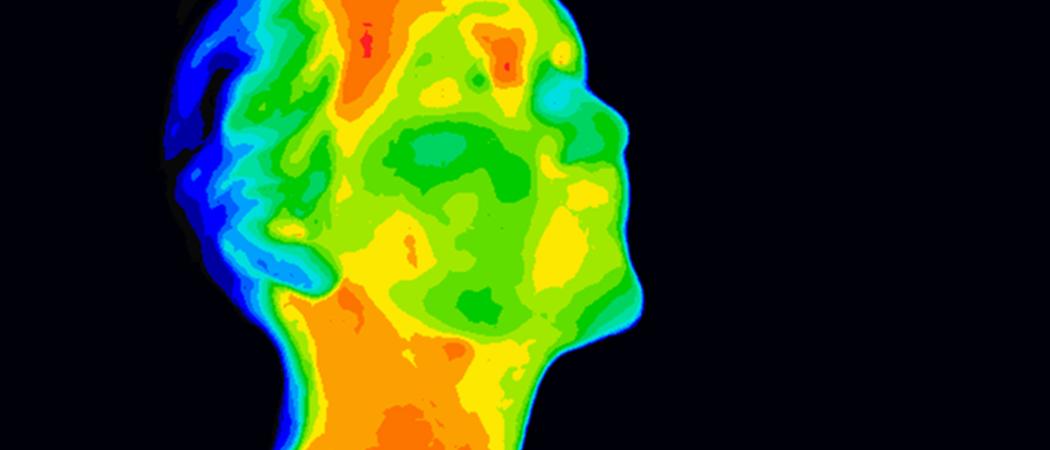
Thermographic image of a human face and neck. Photo: Bigstock
Researchers have developed software that makes it possible to use low-cost, thermal cameras attached to mobile phones to track how fast a person is breathing. Such mobile thermal imaging could be used for monitoring breathing problems in elderly people living alone, people suspected of having sleep apnea or babies at risk for sudden infant death syndrome (SIDS).
In the Optical Society journal Biomedical Optics Express, the researchers report the software combined with a low-cost thermal camera performed well when analysing breathing rate during tests simulating real-world movement and temperature changes.
“As thermal cameras continue to get smaller and less expensive, we expect that phones, computers and augmented reality devices will one day incorporate thermal cameras that can be used for various applications,” said Nadia Bianchi-Berthouze of University College London and leader of the research team. Using low-cost thermal cameras is a first step toward bringing thermal imaging into everyday life. “This approach can be used in places other sensors might not work or would cause concern,” Bianchi-Berthouze said.
Although traditional video cameras can be used to track breathing, they do not work well in low-light situations and can cause privacy concerns when used for monitoring in nursing homes, for example.
“Thermal cameras can detect breathing at night and during the day without requiring the person to wear any type of sensor,” said Youngjun Cho, first author of the paper.
Personal thermal cameras
Thermal cameras, which use infrared wavelengths to measure the temperature of an object or scene, have been used in a variety of monitoring applications for some time. Recently, their price and size have dropped enough to make them practical for personal use, with small thermal cameras that connect to mobile phones now available for around $200.
“Large, expensive thermal imaging systems have been used to measure breathing by monitoring temperature changes inside the nostrils under controlled settings,” said Cho. “We wanted to use the new portable systems to do the same thing by creating a smart-phone based respiratory tracking method that could be used in almost any environment or activity. However, we found that in real-world situations this type of mobile thermal imaging was affected by changes in air temperature and body movement.”
To address this, the researchers developed algorithms that can be used with any thermal camera to compensate for ambient temperature changes and accurately track the nostrils while the person is moving.
In addition, the new algorithms improve the way breathing signals are processed. Instead of averaging the temperature readings from 2D pixels around the nostrils, as has been done in the past, Cho developed a way to treat the area as a 3D surface to create a more refined measurement of temperature in the nostrils.
Robust tracking of respiratory rate in high-dynamic range scenes using mobile thermal imaging, Biomed. Opt. Express, Volume 8, Issue 10, 4480-4503 (2017). DOI: 10.1364/BOE.8.004480.





 A unique international forum for public research organisations and companies to connect their external engagement with strategic interests around their R&D system.
A unique international forum for public research organisations and companies to connect their external engagement with strategic interests around their R&D system.